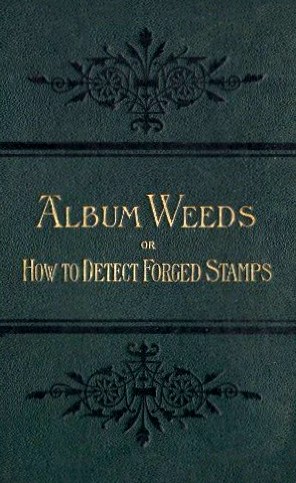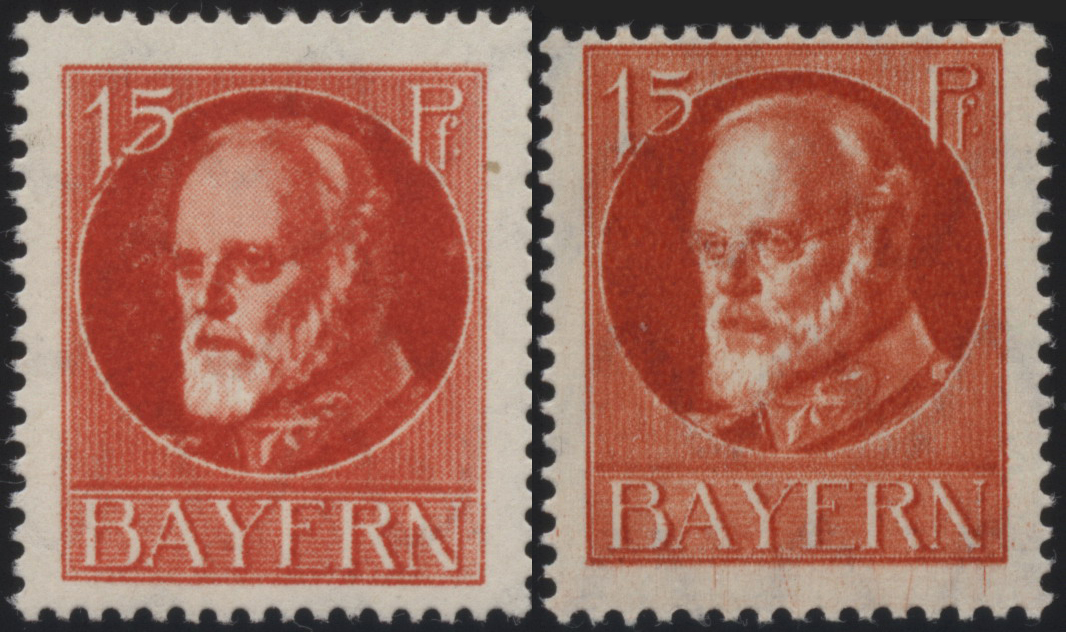|
Fernand Serrane
Fernand Serrane (1880–1932) was a Belgian philatelist who was a popular philatelic author in France and published one of the classic works in the field of identifying forged stamps. Masterwork Serrane's masterwork was his ''Vade-Mecum du specialiste en timbres-poste'', published in two volumes in 1927 and 1929. Not since Robert Brisco EarĂ©e produced his last edition of ''Album Weeds'' in 1906 had a worldwide survey of forgeries appeared and the two books are essential companions in the study of forgeries and fakes of the classic era. The later publication of ''The Serrane Guide'', as it is known, is helpful to philatelists as it covers the heyday of some prolific stamp forgers not known to Earee, for instance, Francois Fournier, Angelo Panelli, Lucian Smeets, and N. Imperato. New edition In 1971 Dr Cortland Eyer (1906-89), a retired Professor of Romance Languages, began the first English translation of the Serrane Guide. His work was sponsored by members of the A ... [...More Info...] [...Related Items...] OR: [Wikipedia] [Google] [Baidu] |
Philatelist
Philately (; ) is the study of postage stamps and postal history. It also refers to the collection and appreciation of stamps and other philatelic products. Philately involves more than just stamp collecting or the study of postage; it is possible to be a philatelist without owning any stamps. For instance, the stamps being studied may be very rare or reside only in museums. Etymology The word "philately" is the English transliteration of the French "", coined by Georges Herpin in 1864. Herpin stated that stamps had been collected and studied for the previous six or seven years and a better name was required for the new hobby than ''timbromanie'' (roughly "stamp quest"), which was disliked.Williams, L.N. & M. ''Fundamentals of Philately''. State College: The American Philatelic Society, 1971, p.20. The alternative terms "timbromania", "timbrophily", and "timbrology" gradually fell out of use as ''philately'' gained acceptance during the 1860s. Herpin took the Greek root word Ď ... [...More Info...] [...Related Items...] OR: [Wikipedia] [Google] [Baidu] |
Forged Stamps
In general, philatelic fakes and forgeries are labels that look like postage stamps but have been produced to deceive or defraud. Learning to identify these can be a challenging branch of philately. To a large extent the definitions below are consistent with those given in the introduction to various recent editions of the ''Scott Standard Postage Stamp Catalogue''. "We use the term ''"forgery"'' to indicate stamps produced to defraud collectors (properly known as forgeries) and to defraud stamp-issuing governments (properly known as counterfeits). ''"Fake"'' is used to indicate the alteration of a genuine stamp to make it appear as something else. Fakes might refer to cancellations, overprints, added or clipped perforations, stamp design alterations, etc." While difficult to do today, one famous case is the Stock Exchange forgery of the late 19th century. Questions are often raised about when a stamp is legitimately produced for postage. Matthew Karanian has proposed th ... [...More Info...] [...Related Items...] OR: [Wikipedia] [Google] [Baidu] |
Robert Brisco Earée
Robert Brisco Earée (1846–1928) was an English priest and philatelist who was known for his studies of philatelic fakes and forgeries. Life A son of the Reverend William Earée, the young Robert Brisco Earée was educated at Cockermouth Grammar School, a boys' school in Cumberland. He was ordained as a priest in 1871 and was appointed as curate at Coggeshall, Essex, in the same year. He married Florence Isabella Goff, daughter of Captain A. Goff (deceased), at Alphamstone, Essex, in August 1876."Alphamstone Marriage of the Rev. R. B. Earee" in ''The Bury and Norwich Post, and Suffolk Herald'', 15 August 1876, p.6. His father had been rector at Alphamstone since 1870. While British chaplain in Berlin in the 1880s, Earée was responsible for raising a fund for a new church dedicated to St George. In 1884, his sister Ada Earée, a singer known professionally as Ada Dorée, married the singer Eric Thorne. In 1890 Earée was inducted as Rector of Miserden in Gloucestershire. ... [...More Info...] [...Related Items...] OR: [Wikipedia] [Google] [Baidu] |
Angelo Panelli
Angelo Panelli (c. 1887 – c. 1967) was an Italian stamp forger, operating from Sanremo in the 1920s and 1930s. Panelli was closely associated with other Italian forgers of the period, particularly Erasmo Oneglia. Tyler, Varro E. (1976) ''Philatelic Forgers: Their Lives and Works''. London: Robson Lowe, pp. 34-35. See also *List of stamp forgers *Philatelic fakes and forgeries References Further reading *''The Oneglia Engraved Forgeries Commonly Attributed to Angelo Panelli'', Robson Lowe John Harry Robson Lowe (7 January 1905, London – 19 August 1997, Bournemouth) was an English professional philatelist, stamp dealer and stamp auctioneer. Life and career Lowe is regarded by philatelists as the father of postal history, ha ... & Carl Walske, James Bendon, Limassol, Cyprus, 1996. . {{DEFAULTSORT:Panelli, Angelo 1880s births 1960s deaths Year of death uncertain Year of birth uncertain Stamp forgers Italian male criminals ... [...More Info...] [...Related Items...] OR: [Wikipedia] [Google] [Baidu] |
Lucian Smeets
Dr. Lucian Smeets was a Belgian stamp forger operating around the early 1900s. Smeets used a sophisticated method of taking an original stamp with the correct perforations, paper and watermark for the one he wished to forge, fading out the printing and then printing a new design of the desired stamp on the blank. Among the stamps Smeets is believed to have forged are: *British Solomon Islands Protectorate canoe stamps. * British Victorian stamps. *Nevis Nevis is a small island in the Caribbean Sea that forms part of the inner arc of the Leeward Islands chain of the West Indies. Nevis and the neighbouring island of Saint Kitts constitute one country: the Federation of Saint Kitts and Ne .... *Serbian stamps of 1901 and 1904. References Stamp forgers Year of birth unknown Year of death unknown 20th-century Belgian criminals Philately of the Solomon Islands {{belgium-bio-stub ... [...More Info...] [...Related Items...] OR: [Wikipedia] [Google] [Baidu] |
American Philatelic Society
The American Philatelic Society (APS) is the largest nonprofit stamp collecting foundation of philately in the world. Both the membership and interests of the society are worldwide. History The organization, originally named the ''American Philatelic Association'', was established on September 14, 1886 in New York City, and the following day elected John K. Tiffany as its first president. Voting membership was granted to 219 individuals who paid two bits (25¢) for the privilege. The organization's name was changed to its present name for a few months in 1897, then back, then permanently in 1908. Society membership reached over 4,000 in 1940, and included U.S. President Franklin D. Roosevelt and his Secretary of the Interior Harold L. Ickes. At the 1942 APS convention, board member Donald Lybarger argued for the creation of a central office near the geographic center of the philatelic community, but not in a large city. When he was elected APS President in 1943, he was able to ... [...More Info...] [...Related Items...] OR: [Wikipedia] [Google] [Baidu] |
1880 Births
Year 188 (CLXXXVIII) was a leap year starting on Monday of the Julian calendar. At the time, it was known in the Roman Empire as the Year of the Consulship of Fuscianus and Silanus (or, less frequently, year 941 ''Ab urbe condita''). The denomination 188 for this year has been used since the early medieval period, when the Anno Domini calendar era became the prevalent method in Europe for naming years. Events By place Roman Empire * Publius Helvius Pertinax becomes pro-consul of Africa from 188 to 189. Japan * Queen Himiko (or Shingi WaĹŤ) begins her reign in Japan (until 248). Births * April 4 – Caracalla (or Antoninus), Roman emperor (d. 217) * Lu Ji (or Gongji), Chinese official and politician (d. 219) * Sun Shao, Chinese general of the Eastern Wu state (d. 241) Deaths * March 17 – Julian, pope and patriarch of Alexandria * Fa Zhen (or Gaoqing), Chinese scholar (b. AD 100) * Lucius Antistius Burrus, Roman politician (executed) * Ma Xiang, Chin ... [...More Info...] [...Related Items...] OR: [Wikipedia] [Google] [Baidu] |
1932 Deaths
Year 193 ( CXCIII) was a common year starting on Monday (link will display the full calendar) of the Julian calendar. At the time, it was known as the Year of the Consulship of Sosius and Ericius (or, less frequently, year 946 ''Ab urbe condita''). The denomination 193 for this year has been used since the early medieval period, when the Anno Domini calendar era became the prevalent method in Europe for naming years. Events By place Roman Empire * January 1 – Year of the Five Emperors: The Roman Senate chooses Publius Helvius Pertinax, against his will, to succeed the late Commodus as Emperor. Pertinax is forced to reorganize the handling of finances, which were wrecked under Commodus, to reestablish discipline in the Roman army, and to suspend the food programs established by Trajan, provoking the ire of the Praetorian Guard. * March 28 – Pertinax is assassinated by members of the Praetorian Guard, who storm the imperial palace. The Empire is auctioned off ... [...More Info...] [...Related Items...] OR: [Wikipedia] [Google] [Baidu] |
Belgian Philatelists
{{Disambiguation ...
Belgian may refer to: * Something of, or related to, Belgium * Belgians, people from Belgium or of Belgian descent * Languages of Belgium, languages spoken in Belgium, such as Dutch, French, and German *Ancient Belgian language, an extinct language formerly spoken in Gallia Belgica *Belgian Dutch or Flemish, a variant of Dutch *Belgian French, a variant of French *Belgian horse (other), various breeds of horse *Belgian waffle, in culinary contexts * SS ''Belgian'', a cargo ship in service with F Leyland & Co Ltd from 1919 to 1934 *''The Belgian'', a 1917 American silent film See also * *Belgica (other) *Belgic (other) Belgic may refer to: * an adjective referring to the Belgae, an ancient confederation of tribes * a rarer adjective referring to the Low Countries or to Belgium * , several ships with the name * Belgic ware, a type of pottery * Belgic Confession, a ... [...More Info...] [...Related Items...] OR: [Wikipedia] [Google] [Baidu] |
Philatelic Fakes And Forgeries
In general, philatelic fakes and forgeries are labels that look like postage stamps but have been produced to deceive or defraud. Learning to identify these can be a challenging branch of philately. To a large extent the definitions below are consistent with those given in the introduction to various recent editions of the ''Scott Standard Postage Stamp Catalogue''. "We use the term ''"forgery"'' to indicate stamps produced to defraud collectors (properly known as forgeries) and to defraud stamp-issuing governments (properly known as counterfeits). ''"Fake"'' is used to indicate the alteration of a genuine stamp to make it appear as something else. Fakes might refer to cancellations, overprints, added or clipped perforations, stamp design alterations, etc." While difficult to do today, one famous case is the Stock Exchange forgery of the late 19th century. Questions are often raised about when a stamp is legitimately produced for postage. Matthew Karanian has proposed the f ... [...More Info...] [...Related Items...] OR: [Wikipedia] [Google] [Baidu] |







